Politics & Economy
The Assassination of Deputy Trần Văn Văn on December 7, 1966 (Part 2)
Published on
By
Lam Vinh The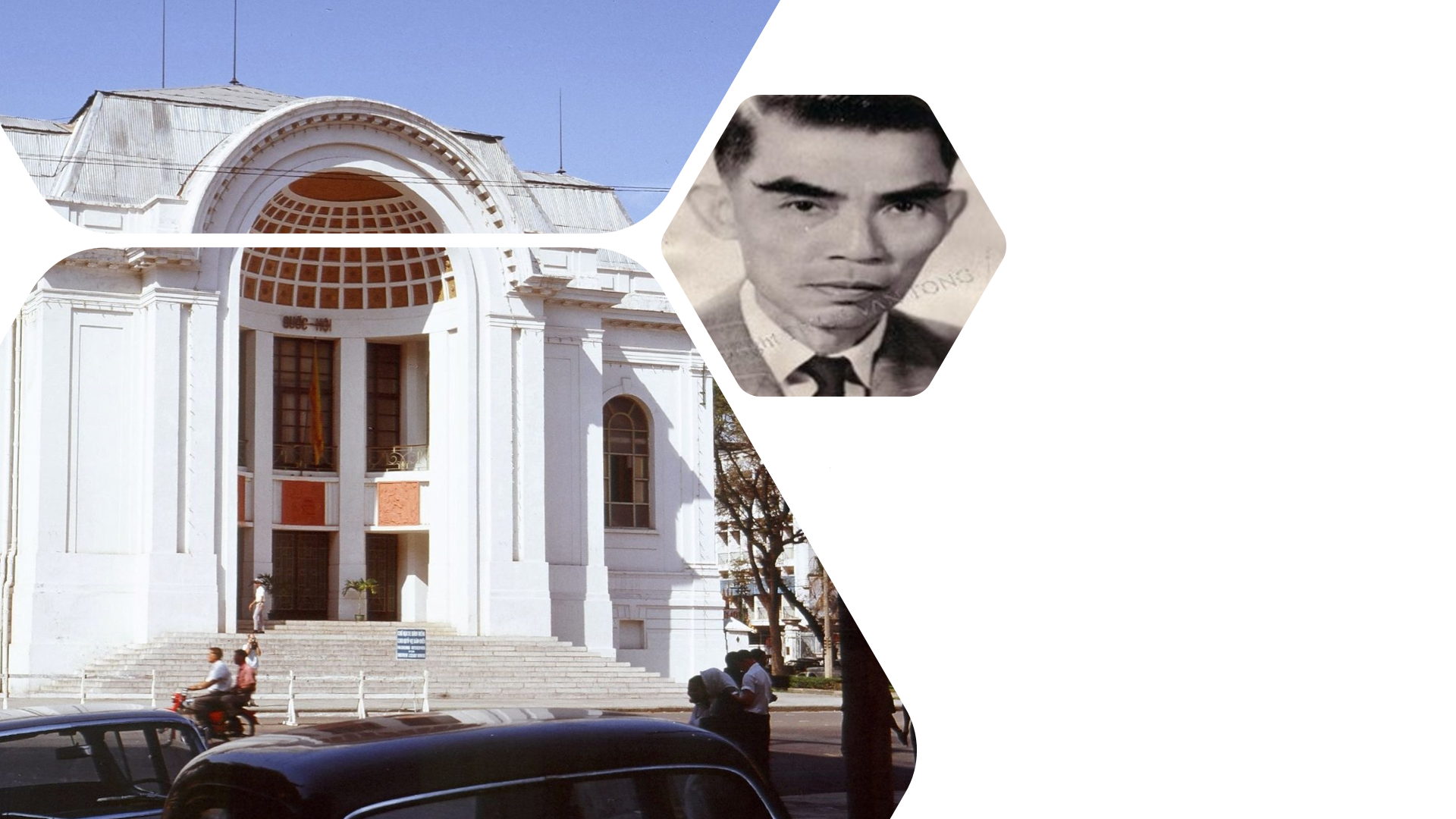
The Assassination of Deputy Trần Văn Văn on December 7, 1966 (Par1, Part 2)
Vinh-The Lam, M.L.S. Librarian Emeritus, University of Saskatchewan, Canada
The Trial of Võ Văn En
In the morning of Monday, January 9, 1967, the Front Military Tribunal of the Capital City Special District and of the Third Tactical Region began the trial of Võ Văn En accused of the assassination of late Deputy Trần Văn Văn. Colonel Trần Văn Quyền was President Judge, Captain Nguyễn Văn Thính was Government Commissioner (i.e. Prosecutor), Mrs. Nguyễn Phước Đại was designated by the Lawyer Corps as Defense Lawyer for Võ Văn En.
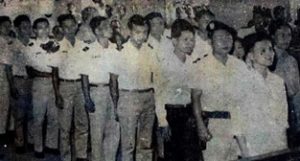
Defendant Võ Văn En and the witnesses at the Trial
(Source: Daily newspaper Chính Luận, no. 837, 11-Jan-1967, p. 1)
In her opening statement, Mrs. Đại suggested the Tribunal allow the three Deputies, members of the CA Committee for the Investigation of the Assassination of Deputy Trần Văn Văn to come and present their statements as witnesses but her suggestion was rejected by the Presiding Judge with the reason that their names were not in the list of witnesses previously submitted to the Tribunal. The Presiding Judge then ordered the Clerk to read the Bill of Indictment. Through the Bill of Indictment, we know more about Defendant Võ Văn En’s background as follows: [21]
“Bị can Võ Văn En tự Võ Văn Tám bí danh Võ Ngọc Thu tục gọi Một, khai: Tháng 4-1964 y bị Việt cộng cưỡng bách thi hành nghĩa vụ quân sự. Sau khi dự khóa huấn luyện về quân sự và chính trị, y được bổ xung cho Trung đội Du kích huyện Củ Chi Hậu Nghĩa. Vì mắt kém, y không thể dự các trận Du kích ban đêm nên Tám Lùng cho y ở mật khu để sản xuất. Hoạt động sản xuất cho đến tháng 1-1966, y đào ngũ để trở về giúp đở gia đình. Tháng 5-1966 y về ấp Mũi Lớn làm ruộng thì bị Trung Đội Dũng Cảm VC bắt dẫn vào vùng Bò Cạp (Củ chi – Hậu Nghĩa). Tại đây y theo học một khóa chính trị. Cuối tháng 8-1966 y được chuyển sang Trung Đội 2 thuộc Đại Đội 1 Biệt Lập Trung Đoàn Giải Phóng Thủ Đô. Theo lệnh của tên Tám Lùn, y xâm nhập vào đô thành xin làm công cho Hảng Xi “Minh Thu.” Trong thời gian làm việc, y thường viện cớ đau yếu để về Mật khu báo cáo công tác. Ngày 15.11.66 y theo học “Khóa huấn luyện đặc biệt” của Trung Đoàn Giải Phóng Thủ Đô tổ chức. Y học các môn sau: Nhiệm vụ Cán bộ công tác Thành; Vũ thuật; Cách bắn súng Colt 11,45. Ngày 25-11-66 tên Tám Lùng giao cho y 1 khẩu súng lục loại 7 ly 65 với 1 băng đạn 6 viên. Y có nhiệm vụ phải đưa khẩu súng cho tên Đực tại Ngã tư Bảy Hiền – Gia Định. Đưa súng cho tên Đực xong, y yêu cầu tên Đực dạy y lái xe Honda mầu đỏ trắng. Ngày 6-12-66, tên Đực chở y bằng xe Honda từ nhà y đến cầu Phan Thanh Giản và chỉ vào một căn nhà trệt nằm bên trái đường và nói rằng: “Tao sắp ám sát một người ở trong nhà này.” Lúc trở về, tên Đực lại chỉ cho y biết căn nhà trên một lần nữa. Ngày 7-12-66, khoảng 7 giờ, tên Đực đưa cho y 1 khẩu súng lục trong một hẽm vắng ở đường Pétrus Ký. Tên Đực cho y biết đi ám sát 1 người ở trong căn nhà trệt ở đường Phan Thanh Giản. Tên Đực chở y bằng xe Honda đi dọc theo đường Phan Thanh Giản, đến Đakao, quẹo tay phải sang đường Phan kế Bính rồi ngừng lại tại ngã 3 đường này và Phan đình Phùng. Tại đây, tên Đực phân công như sau: tên Đực đậu xe Honda tại góc đường Phan đình Phùng – Phan kế Bính; y đứng sát lề trái cách góc đường Phn đình Phùng độ 4 thước, võ trang khầu súng lục nòng 7 ly 65 và 6 viên đạn; tên Đực có nhiệm vụ lái xe Honda chận đầu xe du lịch số 836; y có công tác bắn người đàn ông ngồi phía sau xe. Hành động xong, tên Đực sẽ chở y theo đường Phan kế bính để đến Ngã Bảy (Cholon) rồi chia tay. Phân công xong, y và tên Đực chờ từ 8g đến 9g. Bỗng chiếc xe du lich số 836 chạy đến, tên Đực lái xe Honda chặn đầu xe hơi, y liền rút súng trong người ra xông đến ngang kiến gió sau phía trái xe tay phải cầm súng dơ lên ngắm bắn 3 viên đạn xuyên qua kiến gió phía trái xe vào người đàn ông mặc áo vàng đậm ngồi phía sau xe. Bắn xong y chạy đến ngồi phía sau xe do tên Đực lái để tẩu thoát. Tên Đực chở y chạy ngược chiều đường Phan Kế Bính, rẽ bên trái đường Tự Đức rồi quẹo sang bên phải đường Đinh tiên Hoàng. Tại đây, y nghe tiếng súng nổ phía sau. Thấy một thanh niên cưởi xe Honda đuổi theo nên y ngoãnh mặt lại bắn một phát nhưng không trúng. Lúc xe tới hẽm ra đường Tự Đức y bắn một phát chỉ thiên và ở đường Tự Đức y bắn một phát súng nữa nhưng đạn lép không nổ. Sau đó, bọn y tới ngã tư đường Tự Đức – Phùng khắc Khoan thì thấy một Cảnh sát viên thổi nhiều tiếng còi nên tên Đực vội vàng quẹo trái sang đường Phùng khắc Khoan. Vì chạy xe quá lẹ, bọn y bị trượt té. Lúc bấy giờ, y liệng khẩu súng lục vào lề đường để phi tang vì súng đã hết đạn không xử dụng được nữa. Y chạy độ 100 thước cách nơi bị té để tìm nơi ẩn trốn thì bị nhân viên cảnh sát chặn bắt. Y nhìn nhận khẩu súng lục và chiếc Honda đều là phương tiện mà bọn y đùng để ám sát ông Trần Văn Văn.”
(Translation: “The Defendant Võ Văn En, or Võ Văn Tám, secret name Võ Ngọc Thu, nickname Một, has given the following testimony: In April 1964, he was conscripted by the VC into their army. After he finished his military-political training, he was assigned to the Guerilla Platoon of Củ Chi Hậu Nghĩa District. Because of his weak vision, he could not participate in the guerilla night operations and Tám Lùng assigned him to stay in the secret zone and carry out production work. He performed this production duty until January 1966 and then deserted and went back home to help his family. In May 1966, he went back to Mũi Lớn Hamlet to do some rice farming and was apprehended by the Dũng Cảm Platoon and sent to Bò Cạp area (Củ Chi – Hậu Nghĩa). Here he was allowed to attend a political training course. At the end of August 1966, he was transferred to Platoon 2, independent Company 1, Regiment for the Liberation of the Capital City. By order from Tám Lùn, he penetrated into Saigon and had employment as a worker for Minh Thu Plating Company. During his employment there, he often used the pretext of being sick to take leave of absence and went back to the secret zone for reporting purposes. On November 15, 1966, he attended the “Special Training Course” organized by the Regiment for the Liberation of the Capital City. He learned the following subjects: duty of the cadres operating inside the City; martial arts; how to shoot the 11.45 Colt handgun. On November 25, 1966, Tám Lùng gave him a 7.65 handgun with a cartridge containing 6 bullets. He got a mission to deliver that gun to Đực at the Bảy Hiến intersection – Gia Định. After having given the gun nto Đực, he asked Đực to train him to drive the red-white Honda scooter. On December 6, 1966, Đực carried him on the Honda scooter from his house to the Phan Thanh Giản Bridge and pointed to a one-story house on the left side of the street and said: “I am about to assassinate a person living in this house.” On the trip back, Đực showed him that house one more time. On December 7, 1966, around 7 a.m., Đực gave him a handgun in the deserted alley of the Petrus Ký Street. Đực told him that they were going to assassinate a man living in that one-story house on Phan Thanh Giản Street. Đực carried him on the Honda along Phan Thanh Giản Street to Đakao, turned to the right to Phan Kế Bính Street and then stopped at the intersection Phan Đình Phùng – Phan Kế Bính. There, Đực divided their responsibilities as follows: Đực had the Honda stand at the intersection Phan Đình Phùng – Phan Kế Bính; he would stand on the sidewalk about 4 meters from the intersection, armed with the 7.65 handgun with a cartridge having 6 bullets; Đức had the responsibility to ride his Honda to block the sedan car with the plate having number 836; he had the responsibility to shoot the man sitting on the back bench. When the mission was accomplished, Đực would carry him along Phan Kế Bính Street to Ngã Bảy Intersection (Cholon) and then they would part their ways. When the division of responsibilities was over, both of them waited from 8 a.m. to 9 a.m. Suddenly the sedan bearing number 836 arrived, Đực rode his Honda to block the car, En took out the gun, walked to the glass window of the car and shoot three times the man in a dark yellow jacket sitting on the back bench. After his action, he ran and got on the back seat of the Honda ridden by Đực in their escape. Đực rode his Honda along Phan Kế Bình Street in the opposite direction, took a left turn to Tự Đức Street, and then took a right turn to Đinh Tiên Hoàng Street. At this point, he heard a shot behind him. He saw a young man riding a Honda and chasing them. He turned around and took one shot but he missed. When they arrived to the alley leading to Tự Đức Street he fired one shot to the air, and when still on Tự Đức Street he took another shot but the gun did not fire off because it was a defect bullet. They were then at the intersection Tự Đức – Phùng Khắc Khoan and a policeman blew his whistle many times. Đực took a fast left turn to Phùng Khắc Khoan. Because he rushed too fast, the scooter fell. He threw his gun to the sidewalk since it has run out of bullet and become useless. He ran about 100 m and was caught by a policeman. He recognized that the gun and the Honda scooter were the means for them to carry out the assassination of Mr. Trần Văn Văn.”).
The Bill of Indictment gave a very clear and detailed account of the whole affair, but, in at the trial, Võ Văn En, despite he accepted that he was in fact a VC special agent and had participated in the assassination of Mr. Văn, did not recognize that he himself fired the shots that killed Mr. Văn. He maintained that he was only the rider of the Honda scooter, and it was Đực who had shot Mr. Văn. This reversed testimony was completely like the answer he had given at the press conference in the afternoon of December 7, 1966: “Có phải chính anh là người cầm súng bắn ông Văn không?” “Người khác bắn tôi lái xe.” [22] (Translation: “Was it correct that you were the man who held the gun and shot Mr. Văn?” “A different man fired the fun, I rode the scooter.”). Because of this reversed testimony by En, the defense lawyer, Mrs. Nguyễn Phước Đại, went back and asked witness Trần Văn Xuân, Mr. Văn’s driver, again regarding that issue. “Trả lời câu hỏi khác [của luật sư Đại] là tại sao lúc ở quận Nhứt (sau khi xảy ra vụ ám sát) nhân chứng [tức Trần Văn Xuân, tài xế của ông Văn] nói là thấy người mặt rỗ chột mắt lái xe sao giờ lại khai khác? Nhân chứng đáp “tại lúc đó tôi quá hoảng hốt sợ hải không nhớ ra nên mới nói thế!”” [23] (Translation: “Answering another question [of lawyer Đại] why at the District 1 Police Station [immediately after the assassination] the witness [i.e. Trần Văn Xuân, Mr. Văn’s driver] said he saw that the man with pock-marked face and a defect eye riding the Honda and now gave a different testimony? The witness answered: “because at that time I was so scared and panic and did not remember accurately and said that.””).
Based on Võ Văn En’s consistent testimony compared to the inconsistent testimony of witness Trần Văn Xuân. Mrs. Nguyễn Phước Đại asked the Tribunal to reconsider Men’s guilt and sentence him as an accomplice and not as the main culprit.
After two days, the trial ended in the afternoon with the following sentence: [24]
“Khi nữ luật sư dứt lời, lúc bấy giờ là 17g45, Tòa cho y nói lời cuối cùng nhưng y không nói gì cả. Đại tá Chánh thẩm hỏi: “Bị cáo có muốn nói lời sau cùng gì không?” En đáp: “Không” rồi đứng im. Tử Hình Võ văn En. 17 giờ 50 tòa vào nghị án và sau một giờ nghị án, vào lúc 18 giờ 50, Tòa ra tuyên án xác nhận Võ v En có phạm tội như trong bản cáo trạng đã nêu, và tuyên phạt tử hình cùng tịch thu tài sản. Khi nghe bản án, Võ văn En đứng ngẩn người ra như một kẻ mất hồn. Còn vợ y vẫn không có một phản ứng gì. Thái độ của Thị vẫn thản nhiên lạnh lùng như trong lúc Tòa đương xét xử.” (Translation: “When the lady defense lawyer finished her statement, at 17:45 hours, the Tribunal allowed the defendant to say his last word but he declined to do so. The Presiding Judge asked him: “Does the defendant want to say his last word?” En answered: “No.” and stood still. Death Sentence for Võ Văn En. At 17:50 hours, the tribunal withdrew for deliberation, and after one hour of deliberation, at 18:50 hours, the Tribunal declared that Võ Văn En was guilty as mentioned in the Bill of Indictment, and sentenced him to death with his properties to be confiscated. When he heard the sentence, En was completely bewildered. But his wife did not have any reaction. Her behavior had been the same throughout the whole trial.”).
Reappearance of Võ Văn En 49 Years Later
After the trial, Mr. Trần Văn Văn’s widow sent a letter to Lieutenant-General Nguyễn Văn Thiệu, Chairman of the National Leadership Committee, having the function of Chief of State, seeking amnesty for Võ Văn En. General Thiệu reduced the sentence to life imprisonment, and Võ Văn En was sent to Poulo-Condor Island prison. As time passed, the Constitution of 1967 was promulgated, General Thiệu became the first President of the Second Republic, General Nguyễn Cao Kỳ lost his power, and then during the Tet Offensive Phase 2, General Loan was seriously wounded, and also lost his power. The assassination of Deputy Trần Văn Văn faded in people’s mind.
On April 30, 1975, prisoner Võ Văn En, while carrying his life imprisonment sentence in Poulo-Condor Prison, at that time being around 28 years old, together with all Communist prisoners, became a free person. We have not had any information regarding Võ Văn En’s life and activities for the past 40-plus years, until on August 18, 2015 when En appeared in the Người Giữ Lửa (The Fire Keeper) Television Program of the VTV1 Television Station in Hanoi with Master of Ceremony (MC) Công Tố as can be seen in the following photo: [25]
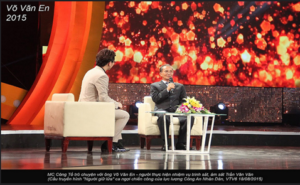
In the introduction of the Television Program, MC Công Tố revealed as follows: “… Ban An Ninh Trung Ương Cục Miền Nam có rất nhiều bộ phận có những nhiệm vụ khác nhau… Trinh Sát 400B5 ở bên ngoài phải thực hiện một trong những nhiệm vụ vô cùng quan trọng là ám sát những tướng lĩnh cao cấp, chính khách quan trọng và những tên ác ôn để làm suy yếu hàng ngũ của địch.” (Translation: “…The Security Section of the Central Office of South Vienam (COSVN) had several organs with different duties … The Reconnaissance Unit 400B5 had to execute one of the extremely important duties outside, and that was to assassinate the senior generals, important politicians, and the evil bad guys in order to weaken the enemy forces.”
The Program then showed some of the photos of the Saigon media announcing the assassination of Deputy Trần Văn Văn on December 7, 1966. After that, the Program broadcast live the video clip containing photo and report of the special agent who had fired the three shots that killed Mr. Văn and had escaped. This special gent’s name is Trần Hoàng Sinh (secret name Sáu Sinh), former member of the Armed Reconnaissance Unit (B5), Security Section of Saigon – Gia Định (T4) shown in the following photo:
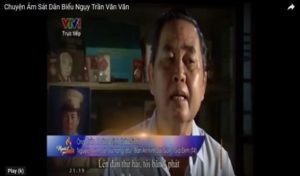
Here’s the account provided by the special agent Sáu Sinh: “Tôi bắn viên đạn đầu tiên lép, xe của Trần Văn Văn chạy qua. Tôi chạy theo xuống đường, tôi giật viên đạn lép ra. Lên đạn thứ hai, tôi bắn 3 phát. Trúng vào ngực nó. Tôi lên xe anh Tám Em chạy thì mười mấy chiếc Honda bảo vệ cho Trần Văn Văn chạy theo. Chúng nó bắn tôi với anh Tám Em. Nó chạy theo đâm thắng vào xe tôi với anh Tám Em. Chúng tôi té xuống. Tôi chạy được còn anh Tám Em bị giặc bắt.” (Translation: “I fired the first shot and it was a defect bullet, Trần Văn Văn’s car passed. I ran after in the street and removed the bad bullet. Getting the gun ready the second time, I fired the next three shots, and hit him in the chest. I got onto the scooter ridden by brother Tám Em and we were chased by about a dozen Honda scooters of Trần Văn Văn’s security guards. They fired toward me and brother Tám Em. They crashed their scooter into the scooter carrying me and brother Tám Em. We fell into the street. I ran and escaped but brother Tám Em was caught by the enemy.”).
In the next section of this Television Program, Võ Văn En reported as follows: “Ở tù thì phải nói là vô đó thì phải chịu… phải lựa những lời như thế nào mình khai báo để cho kẻ địch không thể phát hiện được cơ sở mình… thì mình cứ khai báo là có người thuê tôi chạy mà bắn thì tôi không bắn… còn diễn tả cái người thuê mình thì cho nó tin tưởng một chút, cao ráo, râu ria này kia, mặc đồ lính… cây súng trên tay tôi, cuối cùng thì nó cũng ghép được tôi là tôi bắn.” (Translation: “In prison, we must say that you‘ve got to stand .. you’ve got to choose words in your testimony so that the enemy could not track and discover our organization… you’ve got to testify that you were hired by people to ride the scooter but you did no shooting… now for the description of the person who hired you, in order to make them believe you, you’ve got to give some details like a tall guy, wearing a mustache, wearing military uniform… the gun in my hand, at the end they still could say that I fired the gun.”
Right after this report by Võ Văn En was some presentation of the security and intelligence organizational structure of COSVN with a focus on the Security Network T4 of the Saigon – Gia Định region.
The last and main section of the Program was the interview of Võ Văn En conducted by MC Công Tố. Võ Văn En said: “Tôi tham gia cách mạng năm 1961. Đến năm 1965, Khu Sài Gòn – Gia Định thành lập Lực Lượng Trinh Sát Điều Tra Nội Đô. Tôi là một người được tuyển chọn vào lực lượng này. Mãi đến năm 1966 mới nhận được chỉ thị của Ban An Ninh của phường Gia Định tiêu diệt tên Trần Văn Văn. Chúng tôi lên phương án ngày 7-12-1966 tiêu diệt tên Văn tại ngã ba đường Phan Đình Phùng – Phan Kế Bính Sài Gòn. Bằng 3 phát súng kết liểu cuộc đời tên Trần Văn Văn. Sau khi tiêu diệt tên Văn, chúng tôi rút lui, địch rượt theo, và bắn làm bể bánh xe và tôi bị thương. Tôi nằm lại để chỉa súng về phía địch cho đồng chí Sáu Sinh chạy thoát. Phải nói là khi làm nhiệm vụ, mình làm cái nhiệm vụ trinh sát tiêu diệt giặc, chúng tôi xuống thành phố hơn 1 năm mới đánh trận đầu tiên, mà trận đó cũng là trận mở màn của Lực Lượng Trinh Sát Vũ Trang tiêu diệt những tên ác ôn của thành phố. Khi bị bắt, trước khi đi chiến đấu thì cũng biết rằng có thể bị bắt, cho nên cũng lường trước được cái sự tra tấn dả man của kẻ thù nhưng vẫn giữ một cái lập trường là không biết. Lúc đó tôi khai với giặc là tôi không phải là Việt cộng mà người ta thuê tôi làm việc này. Khai như vậy là để nó khai thác không ra cái đầu mối của mình, thì nó đánh nhiều, mình vẫn quyết tâm chịu đựng, và một mực là không khai, cho nên sau thời gian điều tra khai thác hơn 1 tuần thì không ra được mang mối, nhằm bảo vệ cái cơ sở của mình, cái lực lượng của mình, cho nên khi bắt là đơn vị vẫn hoạt động bình thường, không mất kiên định lúc nào hết.” (Translation: “I got involved in the Revolution in 1961. In early 1965, Saigon – Gia Đinh Zone established the Innercity Reconnaissance and Investigation Force. I was selected to be a member of the Force. It was in 1966 when we received instruction from the Security Committee of Gia Định Ward to liquidate Trần Văn Văn. We set up plan to take him out on December 7, 1966 at the intersection Phan Đình Phùng – Phan Kế Bính. Just by three shots we terminated his life. After the action, we withdrew, the enemy chased us, fired shots causing the tire of our scooter explode and I was wounded. I lay down there and pointed the gun toward the enemy so that comrade Sáu Sinh could escape. We’ve got to say that after, more than one year since we penetrated into the city, this was the first operation by the Armed Reconnaissance Force to eliminate the evil enemy bad guys of the city. We knew in advance that we could be caught by the enemy. We also foresaw that we could be savagely tortured by them, but we had to try our best to keep saying that we knew nothing. At the time, I told the enemy that I was not a VC, I was hired by some people. This kind of testimony would not help the enemy to track down our organization. Of course, that would result in a lot more beating by the enemy. We had the determination to protect our organization. The enemy spent more than one week in their investigation without any result. Therefore, although we were caught by the enemy, our organization still continued to operate as usual. We never lose our determination.”).
Concluding Remarks
Today with new revelations by the Vietnamese Communist Government, we can firmly say that the assassination of Deputy Trần Văn Văn in the morning of December 7, 196 was planned and executed by the Communists.
Disregarding the frequently seen bombastic phrases in the Communists’ statements, we have to admit that the reports by the two special agents Trần Hoàng Sinh (Sáu Sinh) and Võ Văn En (Tám Em) broadcast during The Fire Keeper Program of Hanoi TV Station on August 18, 2015, have directly confirmed the assassination was a victory of the Reconnaissance Force under instruction from the Saigon – Gia Định Zone, directly belonging to the Security Committee of COSVN.
However, our knowledge about this assassination still has some gaps. First, in the TV Program, Sáu Sinh did not reveal how he could escape while being chased by a quite large security force in an area that included only big villas well-guarded by high walls, completely different from the Bàn Cờ area where there were several small alleys in every direction that could provide ways for an easy escape. Second, it is quite hard to understand why the TV Program was completely silent, having not provided any information regarding these two special agents’ activities for the past 40 years (from 1975 to 2015), with the most important missing point being if they have been rewarded with the honorary title of Hero of the Armed Forces or not. Third, we do not have a satisfactory answer to the following question: why did Hanoi TV Station remove this broadcast from its archives?
Although this article did not answer satisfactorily all the questions, at least, it showed quite clearly that the Communists were responsible for the assassination. However, we have to recognize that General Nguyễn Ngọc Loan’s DGNP was partly responsible for having created more doubts among the population, the media, and Mr. Văn’s family. First, the DGNP has used bad tricks to force the CA to dissolve its Committee for the Investigation of the Assassination of Deputy Trần Văn Văn. Second, it was almost certain that the DGNP had illegally obtained forced testimony from Võ Văn En to recognize that he shot Mr. Văn in the Bill of Indictment presented to the tribunal resulting in the damaging reversed testimony by him at the trial. Second, there were also some evidence leading to the doubt that the DGNP had even obtained forced testimonies from the witnesses. Except for Mr. Trần văn Xuân, Mr. Văn’s driver, all witnesses were policemen (Lê Quang Thành, Trần Văn Xuân, Dương Trường Khiết, Đỗ Văn Út, and Nguyễn Văn Thôi). These policemen could have been coerced by their superiors, who had received orders from the DGNP, into giving testimonies that would go along with the DGNP’s position. Besides, except for Mr. Lê Quang Thành, all of them were not eye-witnesses of the assassination. Witness Trần Văn Xuân, Mr. Văn’s driver, was different. He was not simply an ordinary eye-witness, he was present right at the scene of the crime, and had an active role in the event. At least he should have seen very clearly the face of the terrorist who rode the Honda scooter to block his car. That was why, at the District 1 Police Station, right after the shooting, he stated that the rider of the Honda was a man with pock-marked face and with a defect eye (i.e. Võ Văn En). Only after the press conference in the afternoon of December 7, 1966, had he changed his testimony and stated that En was the man who shot Mr. Văn. It was very clear that he was coerced by the DGNP into giving that reversed testimony. Moreover, we have learned that he had also been a bad policeman, who was eliminated from the police force for extortion with a sentence of 6-month in prison. “Trả lời những câu hỏi trước tòa, nhân chứng Xuân [tài xế Trần Văn Xuân] cho biết trước đây đã làm Cảnh sát, [ngay sau đó, bài báo bị kiểm duyệt bôi bỏ mất độ 5-6 chữ] mới vào làm tài xế lái xe cho ông Văn từ ngày 1-11-1966, do bà bác sĩ Nguyễn Lưu Viên giới thiệu … Trả lời 1 câu hỏi của nữ luật sư Đại, nhân chứng [tài xế Trần Văn Xuân] cho biết trước đã ra tòa và bị kết án tù 6 tháng về tôi cưỡng đoạt.” [26] (Translation: “Answering questions at the trial, witness Xuân [driver Trần Văn Xuân] revealed that he had been a policeman [right after this phrase, 5 or 6 words were blackened by censorship], and has just been hired as a driver for Mr. Văn since 1-November-1966, thanks to help from Mrs Nguyễn Lưu Viên … In answering a question from Lady Lawyer Nguyễn Phước Đại, the witness [driver Trần Văn Xuân] said that he was once tried and sentenced for 6 months in prison for extortion.”). Driver Trần Văn Xuân, therefore, was a witness that could be very easily threatened and coerced into taking side with the DGNP. At that time, because they caught only Võ Văn En and seized only one gun, the DGNP did not have any other option but to accuse En as the culprit who had shot Mr. Văn. It was quite natural that Mr. Văn’s family, the media, and the public opinion, at that point in time, had serious doubt that the Kỳ-Loan clan was behind the assassination of Mr. Văn. Today, the truth is revealed and we can confirm that Kỳ-Loan clan was wrongly accused of something they did not do.
NOTES:
-
- Đoàn Thêm. 1966: việc từng ngày (1966: chronololy); foreword by Lãng Nhân. Saigon: Phạm Quang Khai Publishing House, 1968; Los Alamitos, Calif.: re-published by Xuân Thu, 1989, p. 220. This article will show that author Đoàn Thêm was wrong when he said that the location of the assassination was in front of the victim’s house on Phan Thanh Giản Street. The exact place of the assassination was at the intersection of Phan Đình Phùng and Phan Kế Bính Streets.
- Trần Văn Văn, 1908-1966, online document accessible full-text at this URL: http://www.tranvanba.org/new_website/tranvanvan/frame-tranvanvan2.html
- Trần Trọng Kim. Một cơn gió bụi (Gone with the wind). Saigon: Vinh Sơn, 1969, pp. 181-82; online e-book accessible in full-text at this URL: https://tusachtiengviet.com/images/file/73RYtsUW1ggQAAoD/mot-con-gio-bui.pdf
- Đoàn Thêm. Hai mươi năm qua: việc từng ngày, 1945-1964 (The Past twenty years: chronology, 1945-1964); tưa của Lãng-Nhân (foreword by Lãng Nhân). Los Alamitos, Calif.: Xuân Thu, [1989], p. 56.
- Đoàn Thêm, op. cit., p. 355.
- “NGHỊ-ĐỊNH số 47-NĐ/CT ngày 19 tháng chạp năm 1963 bổ-nhiệm hội-viên Hội-đồng nhân-sĩ,” CÔNG-BÁO VIỆT-NAM CỘNG-HÒA, Năm thứ chin, Số 8-Ba (Bộ mới), Ngày Thứ Bảy 21 Tháng Chạp Năm 1963, tr. 264-265. (RESOLUTION no. 47-NĐ/CT, December 19, 1963, nomination of members of the Council of Notables, OFFICIAL JOURNAL OF THE REPUBLIC OF VIETNAM, 9th Year, No. 8-Ba (New Series), Saturday, December 21, 1963, pp. 264-265). The Resolution was signed by General Dương Văn Minh. The Council’s membership was 60, including 2 women and 58 men. Among the 18 persons who had signed the Caravelle Declaration, 12 were nominated to the Council of Notables, and Mr. Trần Văn Văn was one of these 12 persons.
- Đoàn Thêm, op.cit., p. 405.
- Vinh-The Lam. Republic of Vietnam, 1963-1967: years of political chaos. Hamilton, Ont.: Hoài Việt, 2010, p. 69. The full-text of the Provisional Charter is available on pp. 237-254.
- Vinh-The Lam, op. cit., pp. 45-47. “Young Turks” was the collective name given by the U.S. media to the group of young generals of the Armed Forces of the Republic of Vietnam, who were promoted by General Nguyễn Khánh to form his personal power base support.
- Vinh-The Lam, op. cit., pp. 73-74.
- Vinh-The Lam, op. cit., p. 73.
- Vinh-The Lam, op. cit., pp. 131-135.
- “Ky’s top rival slain in Saigon,” article printed on the front page of the American daily newspaper The Pittsburg Press, vol. 83, no. 165 (Wednesday, December 7, 1966), and included the following statement: “Van, a strong anti-Communist, was a member of South Vietnam’s constituent assembly and a leading political opponent of Prime Minister Nguyen Cao Ky. He was against military rule of the nation, and was regarded as top contender for the presidency when control is to be turned over to a civilian government next year.” This article is accessible in full-text at this URL: https://www.flickr.com/photos/13476480@N07/28319159893/in/album-72157672468700355/lightbox/
- “Lời thuật của người tài xế lái xe cho ông Văn,” (Report of Mr. Văn’s driver), Chính Luận, 3rd Year, no. 809, Friday, 9-December-1966, p.1.
- “Một cuộc đuổi bắt gay go,” (A hard chase), Chính Luận, same issue, pp. 1 and 8.
- “Thủ phạm trình diện.” (The culprit is presented), Chính Luận, same issue, p. 1.
- Lý Quí Chung. Hồi ký không tên (Memoir with title). Hồ Chí Minh City: Trẻ Publishing House, 2004, p. 93. This investigation was presented by the author in pp. 93-95. The author made a serious mistake when he said that Mr. Nguyễn Ngọc Loan was a Lieutenant-Colonel. Mr. Loan, at this point in time, after December 7, 1966, was already a General. Actually, he was promoted to Brigadier-General on November 1, 1966.
- Lâm Lễ Trinh. “Mở lại hồ sơ 3 vụ án: Trần Văn Văn, Nguyễn Văn Bông, Trần Văn Bá,” (Reopening the files of 3 affairs: Trần Văn Văn, Nguyễn Văn Bông, Trần Văn Bá), online document, accessible in full-text at this URL: http://cothommagazine.com/index.php?option=com_content&task=view&id=586&Itemid=1
- Trích hồi ký viết tay của cụ bà Trần Văn Văn, (Excerpt from the hand-written memoir of Mrs. Trần Văn Văn), online document, accessible in full-text at this URL: http://www.tranvanba.org/new_website/documenttvv/dam_tang_cu_tranvanvan.pdf
- “Sáng Chủ Nhật 11-12-66 đám tang cố Dân Biểu Trần-Văn-Văn đã được cử hành rất trọng thể,” (Sunday morning, 11-12-66, the funeral of late Deputy Trần Văn Văn was organized very solemnly), Chính Luận, 3rd Year, no. 812, Tuesday, 13-December-1966, p. 1.
- “Bản Cáo Trạng do Ủy Viên Chính phủ tại Tòa án Quân Sự Mặt Trận Biệt Khu Thủ Đô và Vùng 3 Chiến Thuật lập ra,” (The Bill of Indictment submitted by the Government Commissioner to the Front Military Tribunal of the Capital City Special District and of the Third Tactical Region), Chính Luận, 4th Year, no. 838, Thursday, 12-January-1967, p. 4
- “Một tên sát nhân cuồng tín,” (A fanatic assassin), Chính Luận, no. 809, op.cit., p. 8.
- “Trước Tòa quân sự mặt trận Biệt khu thủ đô và Vùng 3 chiến thuật, đặc công Võ-Văn-En chối loanh quanh nhưng nhận có dự vào vụ cố sát ông Văn,” (Before the Front Military Tribunal of the Capital City Special District and of the Third Tactical Region, special agent Võ Văn En desperately denied everything but recognized to have participated in the assassination of Mr. Văn), Chính Luận, 4th Year, no. 837, Wednesday, 11-January-1967, p. 3.
- “Sau 2 ngày liên tiếp xét xử, Tòa Quân Sự Mặt Trận Biệt Khu Thủ Đô và Vùng 3 chiến thuật tuyên án tử hình đặc công Võ-Văn-En,” (After two consecutive days of trial, the Front Military Tribunal of the Capital City Special District and of the Third Tactical Region sentenced special agent Võ Văn En to death), Chính Luận, no. 838, op.cit., p. 3.
- Người giữ lửa (The Fire Keeper), a Television Program of VTV1 Television Station, broadcast on 18-August-2015. Now, this video clip is no longer accessible from the Website of VTV1 Television Station. Fortunately, a copy of it, with 12 minutes and 17 seconds in length, still accessible from YouTube at this URL: https://www.youtube.com/watch?v=cqjrAY0ZBVw
- “Phiên xử buổi chiều,” (The afternoon session of the trial), Chính Luận, no. 837, op. cit., p.3.
You may like

Reflections on New Era of National Rise by Vietnam General Secretary Tô Lâm

Of Space & Place: On the Nationalism(s) of Tuan Andrew Nguyen’s “Our Ghosts Live in the Future”

Postwar Music In Vietnam And The Diaspora

Translation: The Decision in 2013 of the Central Committee of the Communist Party of China on Certain Major Issues Concerning Comprehensively Deepening Reform

Thủ Đức Demonstration High School: A Modern Educational Policy and Teaching Method of the Republic of Vietnam

Vietnam’s unresolved leadership question

Rethinking History and News Media in South Vietnam

“The Vietnam War Was an Unwinnable War”: On Factuality and Orthodoxy

Democracy in action: The 1970 Senatorial elections in the Republic of Vietnam (Part 1)

Pandemics and Morality: Lessons from Hanoi
US-VIETNAM REVIEW
-
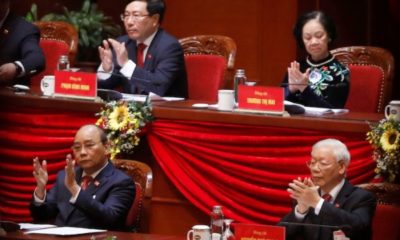
 Politics & Economy4 years ago
Politics & Economy4 years agoVietnam’s unresolved leadership question
-
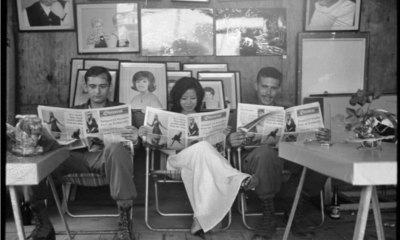
 Politics & Economy2 years ago
Politics & Economy2 years agoRethinking History and News Media in South Vietnam
-
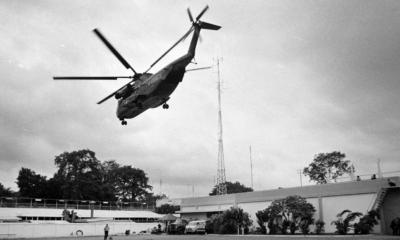
 After 19751 year ago
After 19751 year ago“The Vietnam War Was an Unwinnable War”: On Factuality and Orthodoxy
-
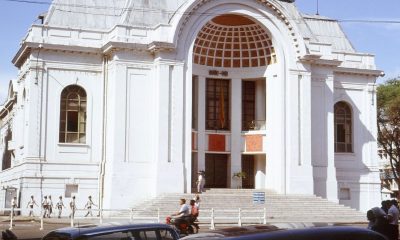
 ARCHIVES5 years ago
ARCHIVES5 years agoDemocracy in action: The 1970 Senatorial elections in the Republic of Vietnam (Part 1)
-

 Society & Culture5 years ago
Society & Culture5 years agoPandemics and Morality: Lessons from Hanoi
-
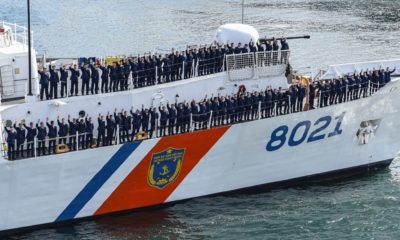
 Politics & Economy4 years ago
Politics & Economy4 years agoThe Limit to U.S.-Vietnam Security Cooperation
-
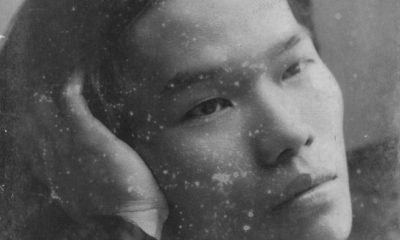
 Politics & Economy5 years ago
Politics & Economy5 years agoNational Shame: How We (Americans) can learn from Nguyễn An Ninh
-
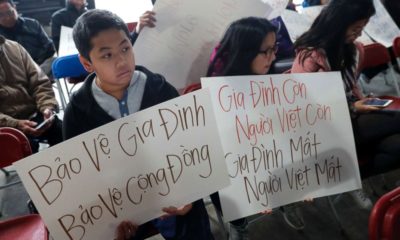
 Vietnamese-America4 years ago
Vietnamese-America4 years agoDeporting Vietnamese Refugees: Politics and Policy from Bush to Biden (Part 1)


